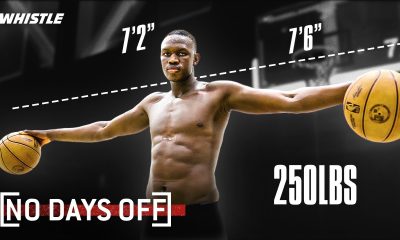NIL
On The Line presents new NIL contribution concept for area schools


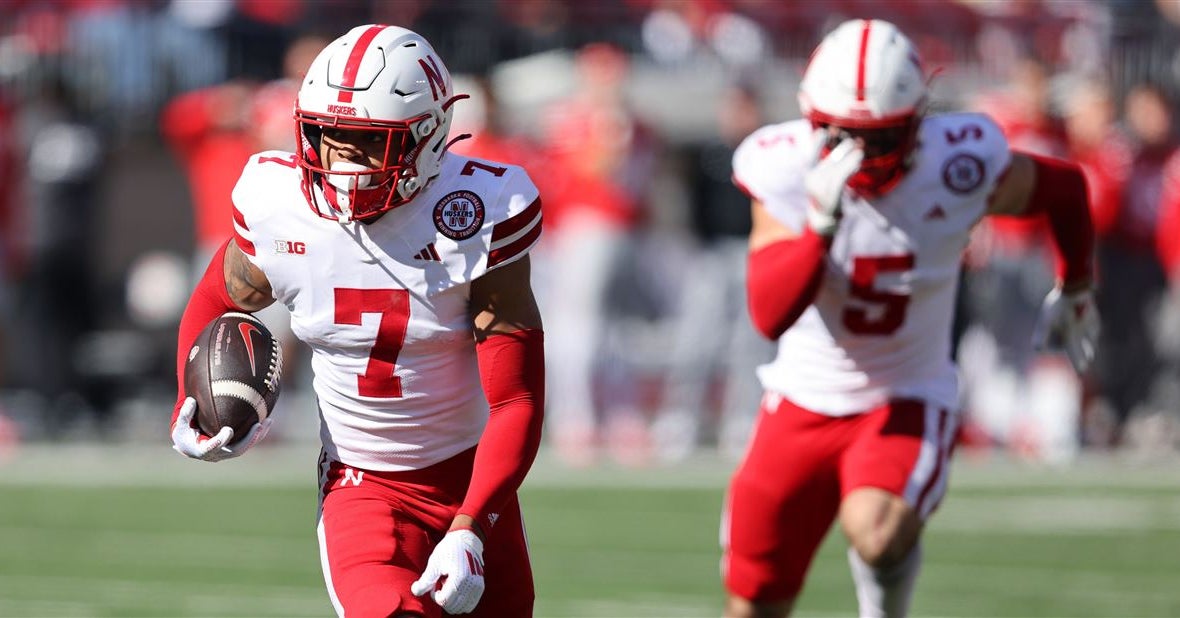
Visit On The Line at www.athleticsontheline.com for more information.When brought to college athletics and pitched in the NIL world it created an interesting opportunity to get fans who wouldn’t normally classify themselves as donors involved.The Petersens have found that those involved enjoy the reward of both watching the success and contributing to what’s happening on the playing field. And it’s not cost prohibitive. Want to participate? Pick an amount to pledge and then root for your team.”We presented with Nebraska and they were onboard immediately,” Petersen said. “It was really shocking, but there wasn’t any pushback. This was a no cost to them platform and it has fans participating in a new, innovative way.” Andy and Drew Petersen created On The Line, a contribution platform for collegiate programs, allowing fans of all types to contribute based on a chosen statistical achievement. Since the idea originated the Petersens brought in Ashley Ibach (Andy’s daughter, Drew’s sister) as well as business partner Brian Galloway. Between this group every one of Nebraska’s D-1 universities received representation.A father-son business duo stepped up with a solution that not only benefited UNO, but has caught on with programs at Creighton and Nebraska. At Creighton the statistical trigger for the 2024-25 season has been 3-point field goals. Each time the Blue Jays splashed from behind the arc their own internal pot of money grew.Petersen was quick to point out that this isn’t the first attempt to base contribution off team success, but what makes On The Line unique is that it allows customization per school, per sport.Nebraska has five sports currently involved with On The Line as baseball, football, volleyball and men’s and women’s basketball are all available on the platform.And despite the program’s best efforts to generate NIL money for the local product, it wasn’t likely to compete with Big Ten, Big 12 and SEC programs if they came calling. While it hadn’t been a terrific season the Mavs were feeling good about some players with returning eligibility, players like Marquel Sutton and JJ White, but Frankie Fidler, a multiyear starter who joined up from nearby Bellevue West High School and second on the Mavs all-time scoring list, was set to enter the portal. Creighton and UNO immediately followed suit and On The Line went from idea to a real operation where fans were encouraged to donate to sports based on statistical achievement. “At the end of the day for us it’s a platform it can be wedged into whatever the schools want,” Petersen said. Following a tough loss to Denver in the semifinals of the 2024 Summit League Tournament the Omaha Mavericks and its boosters were looking for answers to a near unsolvable problem.How can the smallest D-I basketball program in the state compete on the court and off it in the Name Image and Likeness (NIL) era? “What about the people that want to give 100 or 200 or 300 dollars a season just to support their team in a new way,” Petersen said. “From a fan stand point we wanted to cast a bigger net to that level of donor that want to participate but financially are at a different level.”Each sport involved chooses how the contributions work. For instance with Nebraska football the contribution trigger would be takeaways. Every time Nebraska’s defense forced a takeaway in 2024 more money rolled in for the program — which could be used either as NIL for the athletes or help supplement other costs.All schools have donors, most schools have collectives, but at a place like UNO where its basketball program lags behind the state’s only D-I hockey program in terms of popularity, what else could be done? On The Line continues to seek more programs within the state’s three schools to get involved and has branched out with conversations with other colleges and even some high schools who are interested in setting up the platform.The Petersens went to all three of Creighton, Nebraska and UNO with the idea born out of a late night conversation following the Mavericks loss and found the schools to be immediately receptive.The idea was born out of youth athletics, Drew Petersen said, referring to little league teams that have fundraisers built around the idea that the more wins they achieve or the more home runs the team hits, the more donors would give.The goal for On The Line is to continue to grow and for the Petersens, who root for all three athletic programs, it’s for college athletes to enjoy that success both on and off the court.”It gives the ability for someone to participate based on performance,” Petersen said. “Everybody wants to see the team win. Everybody wants to see the team score. Everybody wants to see the team play well, so I’ll pay to see that performance.”
NIL
Miami Selected to College Football Playoff – University of Miami Athletics

CORAL GABLES, Fla. — The Miami Hurricanes football program was selected Sunday to the 2025 College Football Playoff, receiving an at-large bid to secure the team’s first-ever trip to the CFP.
The Hurricanes are seeded tenth in the CFP field and will travel to College Station, Texas, to face seventh-seeded Texas A&M on Saturday, Dec. 20, at noon ET on ABC.
“We are excited to be making our first appearance in the College Football Playoff,” Vice President/Director of Athletics Dan Radakovich said. “Congratulations to Mario Cristobal, our coaching staff and our student-athletes on a terrific regular season that was justly rewarded by the CFP Committee. We look forward to facing Texas A&M in the opening round and I know Miami fans will make their presence felt in College Station.”
Miami (10-2) closed the regular season as one of the most complete teams in the country, ranking second in the ACC in scoring offense at 34.1 points per game while leading the league in scoring defense at just 13.8 points allowed per contest. The Hurricanes also led the ACC in total defense, surrendering only 277.8 yards per game.
On offense, Miami averaged 425.8 yards per game. The Hurricanes posted 5,110 total yards with 50 total touchdowns across 12 games, including 27 passing touchdowns and 23 rushing scores.
Through the air, Miami led the ACC in passing efficiency at 165.47 while completing 73.88 percent of its throws for 3,310 yards. Defensively, Miami held opponents to just 86.8 rushing yards per game, the best mark in the ACC, while allowing only 190.9 passing yards per contest.
To stay up to date with the University of Miami football team, be sure to follow @canesfootball on Instagram, X and Facebook.
NIL
Forget Kiffin — NIL is the real villain here

I am not an Ole Miss fan… Hail State. So, when Lane Kiffin left for LSU, “ne’er a tear fell.” Most likely, the same could have been said about our Egg Bowl rivals when Dan Mullen left MSU to go coach at Florida in 2017, leaving the Dawgs without a head coach for the TaxSlayer Bowl.
It’s just something about having a winning season that gets our Mississippi coaches snapped up for bigger and better things.
As history has shown us, however, these grandiose positions don’t always pan out. But as luck would have it for these men, the money keeps rolling in thanks to lucrative contracts that payout even when you’re fired.
Life is just not fair!
I guess some of you may be curious as to why I am even bringing up this topic. It’s not like I am any kind of football fanatic or guru.
Sure, I enjoy watching a game now and again, particularly when Mississippi State is having a winning season — I guess you can deduce that it’s not been too often these days — but what little enjoyment I have had in the past is certainly waning. And it seems this Kiffin contract is becoming the nail in the coffin.
NIL
John Calipari Said What? Must-Hear Quote About NIL Era Goes Viral After Arkansas Video
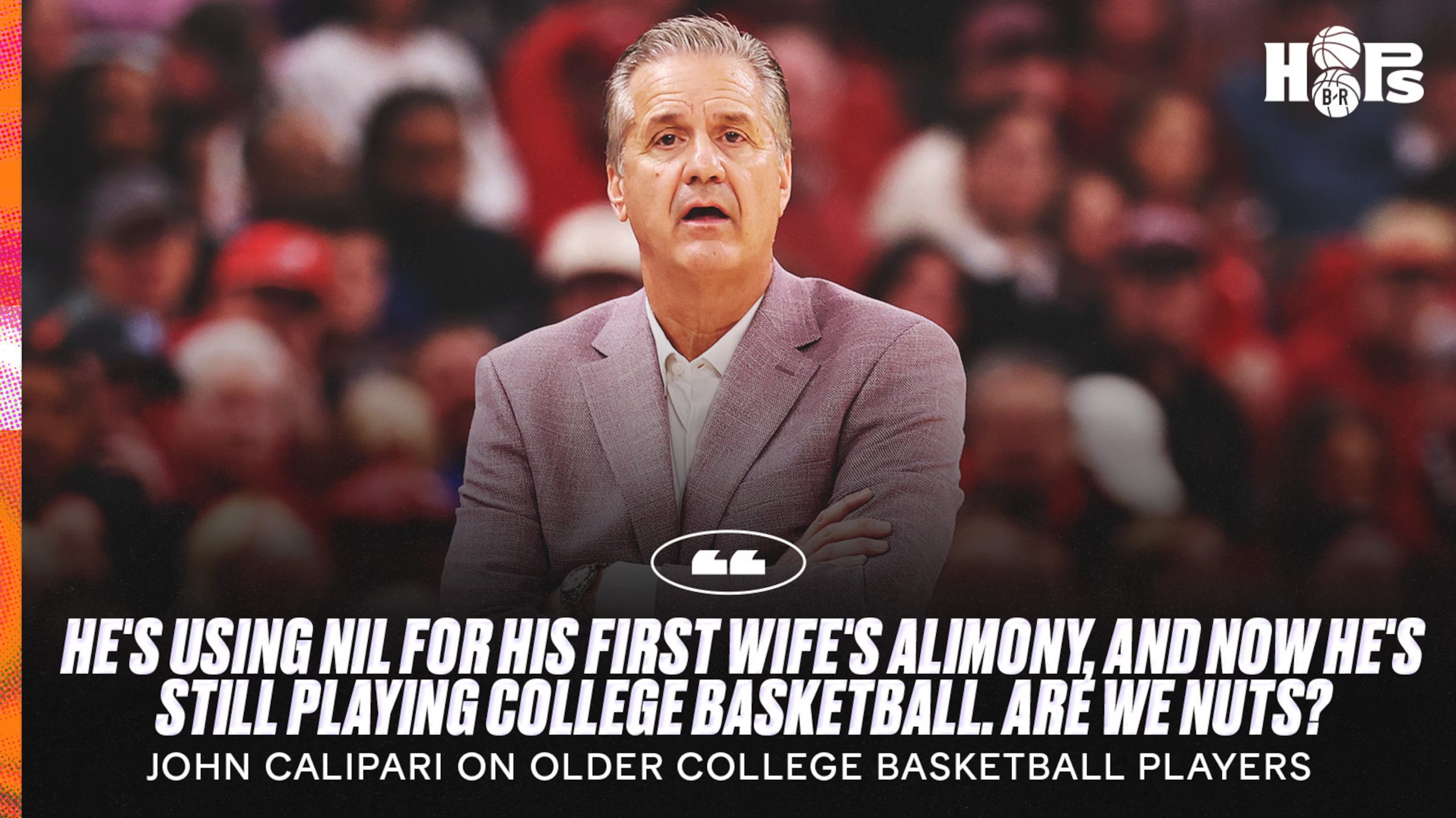
Arkansas men’s basketball coach John Calipari expressed a desire for the NCAA to adjust its eligibility rules when talking Saturday about aging rosters in the era of NIL and revenue sharing.
Calipari was asked Saturday what he thought about recent upsets including Gonzaga’s Friday blowout of Kentucky, Louisville’s Saturday upset of Indiana and Iowa State’s dominant Saturday win over Purdue.
“There are a lot of older gentlemen with beards playing basketball in college right now,” Calipari answered after the Razorbacks’ 82-58 Saturday win over Fresno State. “There are. So, the one that’s crazy, and the guy comes in, and he’s waving to his kids up in the seats. And you’re like, ‘Wait a minute. The guy’s got two kids. He’s still playing college basketball.’
“Crazy thing. He’s using NIL for his first wife’s alimony, and now he’s still playing college basketball. Are we nuts? So now you have these kinds of games, and these kind of scores.”
Calipari went on to estimate that the Razorbacks will be “one of the three youngest teams in the SEC” this season.
The head coach told reporters that creates mismatches with older teams both on mental and physical levels.
“Last year every team was old in our league. They were old,” Calipari said. “And so now, you’re going to have those kind of things. And you’re also going to have a team, like a Fresno, beat somebody because they’ve got all grad students, seniors, and their average age is 25, and your average age is 19 or 20.
“So, until we fix the eligibility thing, this is what it is.”
Average ages in men’s college basketball have been trending upward for the past decade.
The average age of starters in the Sweet 16 rose from 20.8 to 21.6 between 2019 and 2025, per Lev Akabas of Sportico.
Auburn’s starters had an average age of 23.2, which made the Tigers rotation older than the starting lineups of five NBA teams at the time, per Akabas.
That trend could become even more dramatic if the NCAA considers giving athletes an additional year of eligibility without a redshirt, which The Athletic’s Sam Khan Jr. and Ralph D. Russo reported in October some football and basketball coaches were expecting in the near future.
The NCAA answered with a memo in October stating that current eligibility rules giving athletes five years to play four seasons would remain in place at least through the 2026-27 academic year, per Khan and Russo.
NIL
College Football Playoff Top 25: Final Official 2025 CFP rankings revealed
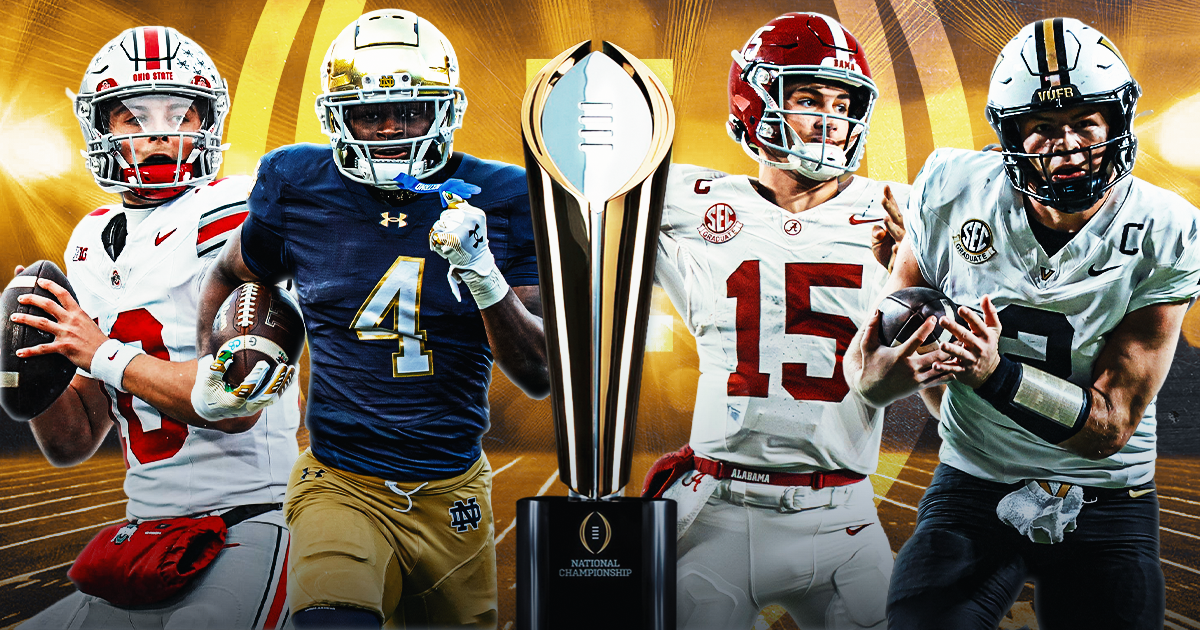
The final College Football Playoff rankings have arrived, revealing the 12-team field selected by the committee along with the teams which just missed the cut. As conversation rages on about multiple bubble teams and their case to play into the postseason, the bracket is now set in stone.
The five highest-rated conference champions are guaranteed a spot in the field, but not a first-round bye. The remaining seven bids will be filled by seven at-large qualifiers who can be slotted according to their ranking.
A slight shift from last season’s format, this brings added clarity to the process throughout the season and ensures the top teams will benefit from their resume. Those who finish between 5-12 will participate in the first round, hosted by the higher seed before subsequent rounds are played at traditional bowl sites.
With all the data in, here is how the selection committee ranked the Top 25 teams and their spot in the upcoming 12-team College Football Playoff. Even with everything set, there is sure to be plenty more debate over the decisions.
Indiana finishes the season 13-0, winning its first Big Ten Championship in more than 50 years over Ohio State. For Curt Cignetti’s team, that victory all but sealed the No. 1 overall seed as the only undefeated team left in college football.
Now, they’ll top the College Football Playoff rankings for the first time. This team is firmly in the national title race.

Ohio State suffered a loss in the Big Ten Championship, dropping them to 12-1 on the season. Ryan Day’s team falls from the No. 1 spot it held for most of the season but remains high enough to secure a first-round bye in the College Football Playoff.
Just like last season, they’ll go into the bracket with a loss in their final game before the postseason. Is it time to say, “repeat season?”
Georgia was crowned the SEC Champion after avenging its only loss of the season against Alabama, bringing them to 12-1 in total. Kirby Smart and the Bulldogs will lock up a first-round bye in the College Football Playoff as a result.
Georgia looked dominant in their win over the Crimson Tide. That’s the type of defense that can win you a national championship as Smart looks for his third as head coach.
Texas Tech picked up a second win over BYU this season, helping the Red Raiders lift the Big 12 title at 12-1. Joey McGuire’s team will secure a first-round bye in the College Football Playoff as a result, paving their path forward in the postseason.
Speaking of a defense that’s dominant, Texas Tech has it. Jacob Rodriguez is in the Heisman conversation and he’ll look to add a national title to the Red Raiders trophy case.
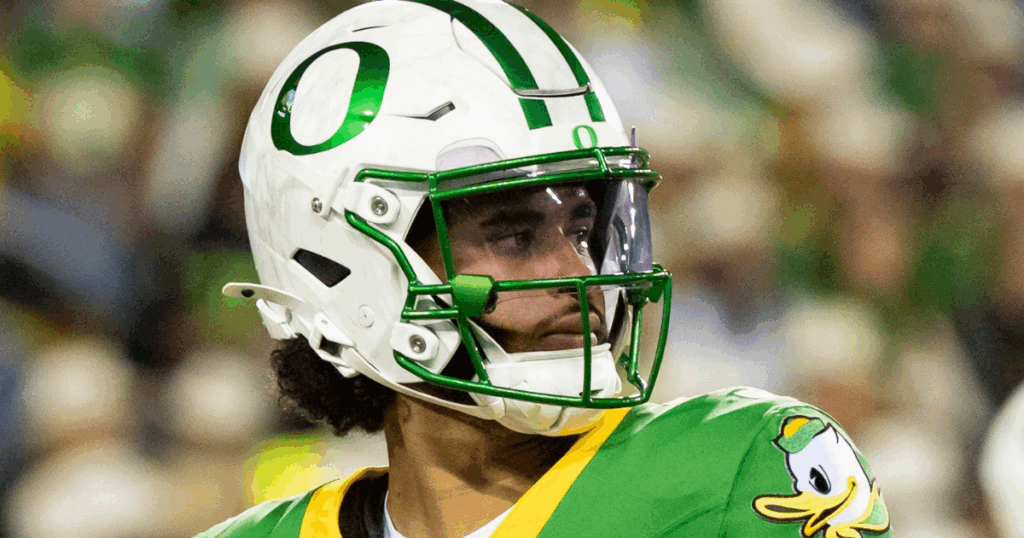
Oregon is the top-ranked team which sat idle on conference championship weekend, standing behind their 11-1 record. Dan Lanning and his team will be able to host a first-round matchup as a result of the seeding.
Eugene should be on fire for the College Football Playoff in a couple of weeks. After getting a bye last season, Oregon will go right away in this year’s postseason.
Ole Miss finished 11-1 before head coach Lane Kiffin left for the LSU job, leaving the postseason in flux. Now, Pete Golding leads his team into the College Football Playoff with a chance to host the first round in Oxford, Mississippi.
The Aggies finished 11-1 this season and a loss to Texas kept them out of the SEC Championship. Still, they have made the College Football Playoff for the first time and will get a home game in College Station.
Mike Elko and crew will have a chance to rectify any errors at the end of the regular season. And if they win at home, they’ll take on the defending national champs: Ohio State.
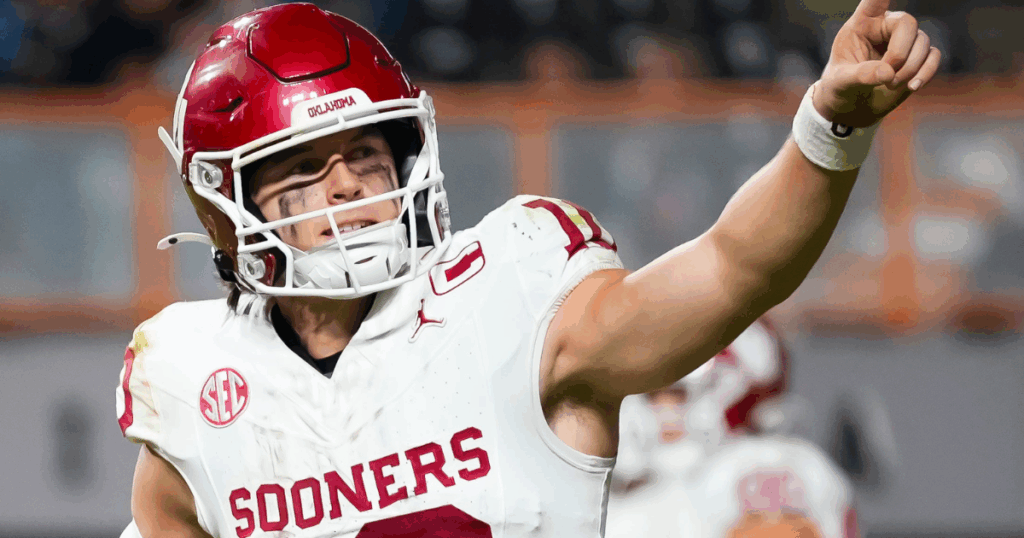
Oklahoma finished the regular season 10-2, a good enough mark to keep them safely in the postseason picture. Brent Venables’ team will now host a first-round matchup after seeing the teams behind them playing in championship weekend lose.
Oklahoma gets the spot above Alabama, whom they will play in the first round in Norman. The Sooners beat them in the regular season so it’s officially time for a rematch for the right to play Indiana.
Alabama lost in the SEC Championship, dropping their final record to 10-3 before the selection committee met to rank the Top 25 teams. The Crimson Tide pitched their case behind Kalen DeBoer and argued conference championship weekend as additive.
They weren’t penalized though and DeBoer returns to the College Football Playoff, this time in Crimson colors. They’ll have a chance to get payback against Oklahoma in the first round.
Miami has made its head-to-head case throughout the season against Notre Dame, with the selection committee answering for the movement each week. Mario Cristobal’s team sat idle on conference championship week, but continued to be the center of bubble conversation.
So now, they’ll be in the College Football Playoff for the first time in program history. Because of the conference championship results, the committee ultimately decided to reevaluate the bubble teams and came to the conclusion the Hurricanes were worthy this year.
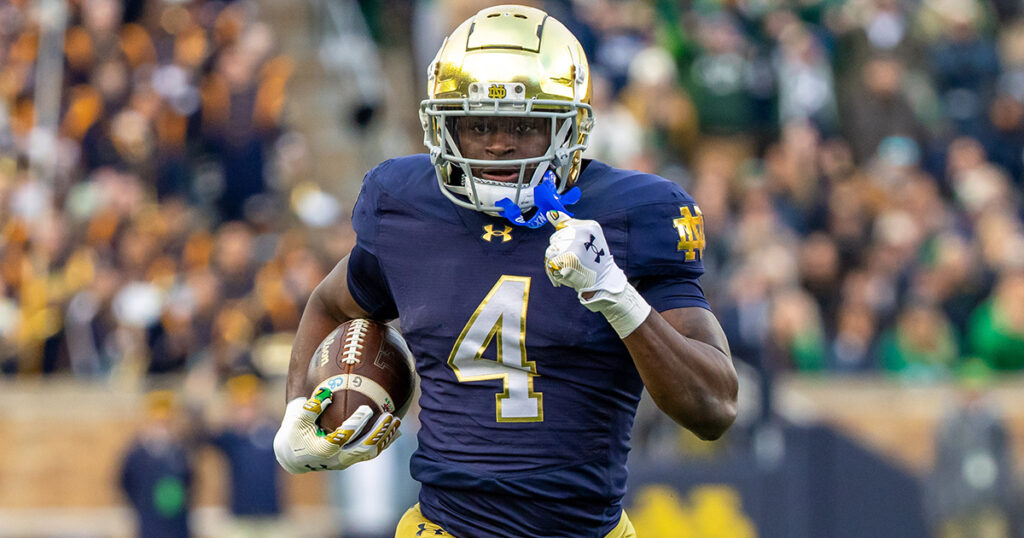
The Fighting Irish were the first team left out of the College Football Playoff. Due to their head to head loss against Miami back on August 31st, the committee reevaluated the data as they were pitted against one another Sunday.
Since the rankings dictated both the Hurricanes and Irish were right next to each other, Miami would get the nod due to their win. The Irish won 10 in a row to conclude the year, but they’ll be subject to a high profile bowl game instead of the CFP.
BYU’s loss in the Big 12 title game basically ended any hopes of a College Football Playoff bid this season. The Cougars had to beat Texas Tech in order to get into the bracket.
They were on the outside looking in going into Saturday, so they would’ve needed some sort of miracle in order to land a bid this year. Kalani Sitake’s crew will go into a bowl game at 11-2.
13. Texas
14. Vanderbilt
15. Utah
16. USC
17. Arizona
18. Michigan
19. Virginia
20. Tulane (College Football Playoff No. 11 seed)
21. Houston
22. Georgia Tech
23. Iowa
24. James Madison (College Football Playoff No. 12 seed)
25. North Texas
NIL
Texas Tech lands No. 4 seed, trip to Orange Bowl
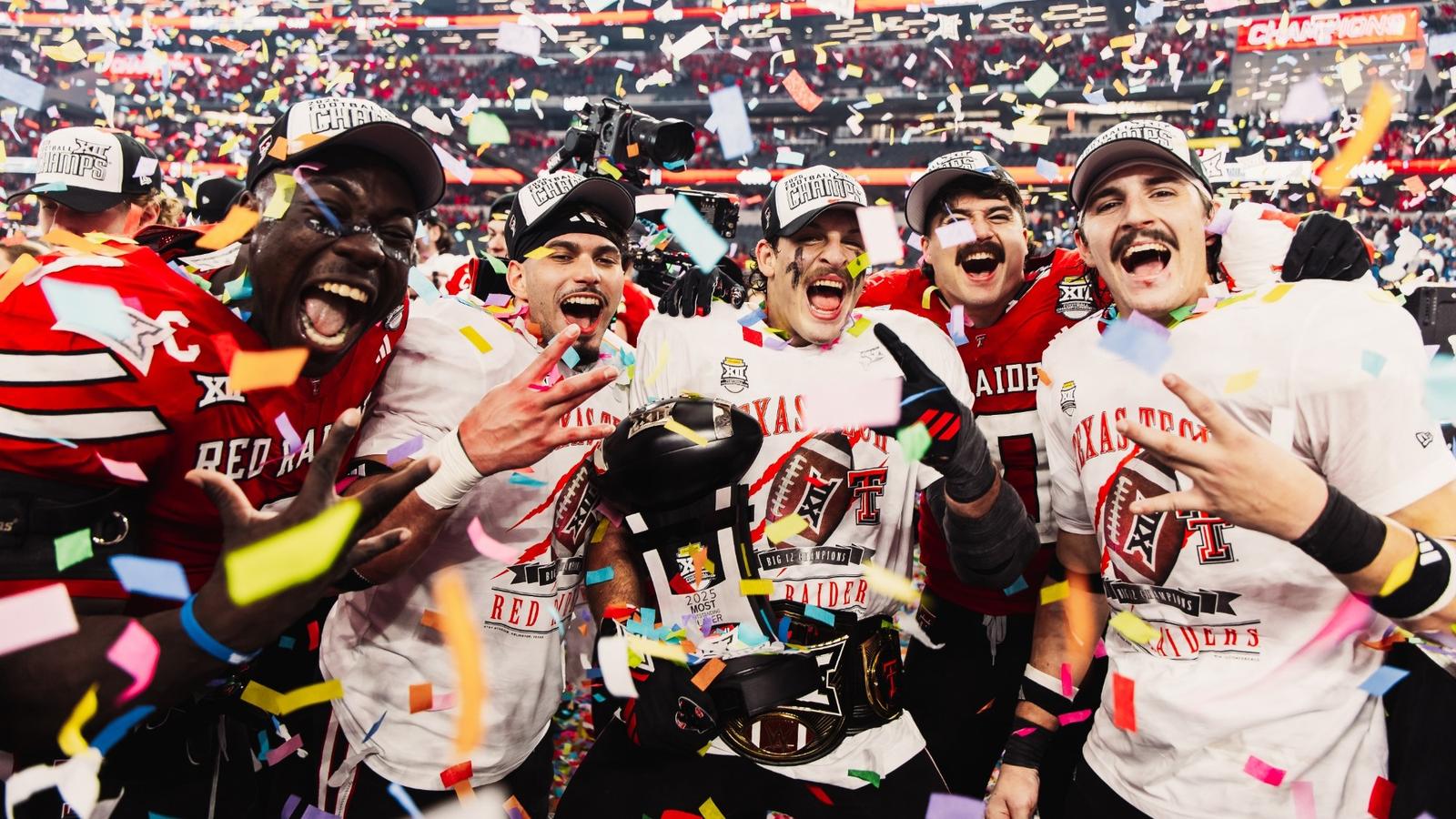
LUBBOCK, Texas – Texas Tech will make its first appearance in the Capital One Orange Bowl on New Year’s Day as the Big 12 champion Red Raiders were announced Sunday as the No. 4 seed in the final College Football Playoff rankings.
The Red Raiders will receive a first-round bye in the College Football Playoff and await the winner of the 5/12 matchup between No. 5 Oregon and No. 12 James Madison. Oregon (11-1) was an at-large selection into the College Football Playoff and will host James Madison (12-1), the champion of the Sun Belt Conference, in the opening round at a date and time to be determined later this afternoon.
Kickoff between the winner of that game and the Red Raiders is slated for 11 a.m. CT on Jan. 1 from Hard Rock Stadium in Miami Gardens. Hard Rock Stadium is also the site of this year’s CFP National Championship Game, which pits the winner of the semifinal matchups at the VRBO Fiesta Bowl and the Chick-fil-A Peach Bowl.
“This has been the goal of this program the entire season – to win the Big 12 title and play in the College Football Playoff,” head coach Joey McGuire said. “To be able to achieve that goal and play in such as prestigious event like the Orange Bowl is an added chapter to the story this team continues to write. We’re thankful to get a first-round bye to be able rest our team and get ready for either a very talented Oregon or James Madison team.”
Texas Tech’s path to the College Football Playoff is one rarely seen in college football season with 12 victories by 20-plus points. The Red Raiders, who improved to 12-1 overall with a 34-7 victory Saturday over previously-No. 11 BYU in the Edward Jones Big 12 Championship, joined the 2018 Alabama team as the only programs in the Associated Press era (since 1936) to record at least 12 wins in a season by 20-plus points prior to the bowl game.
Texas Tech’s second win over BYU this season Saturday secured the Red Raiders’ first Big 12 title and their first outright conference crown since winning the Border Conference in 1955. The win placed Texas Tech in the College Football Playoff for the first time, continuing a memorable season for the Red Raiders, who have already set a new school record with 12 wins behind a stifling defense and a high-scoring offense.
“On behalf of our entire athletics department and university, Texas Tech is excited to make its first appearance in the Capital One Orange Bowl,” Director of Athletics Kirby Hocutt said. “As a former resident of the Miami area, myself, I know Red Raider Nation will enjoy the hospitality and entertainment the Orange Bowl is known for and turn South Beach into West Texas.”
Ticket requests for the Capital One Orange Bowl are now being accepted from Red Raider Club members and current season ticket holders. Due to limited ticket inventory, Texas Tech will allow only eight requested tickets per Red Raider Club account at the $5,000 level or above and then four tickets for all other accounts. As a reminder, College Football Playoff tickets are not guaranteed and will be filled based on Red Raider Club priority points, while tickets remain.
Red Raider Club members and current season tickets holders can submit ticket requests now by logging into their account on TexasTech.com. The Texas Tech Ticket Office will open at 8:30 a.m. Monday and can be reached at 806-742-TECH for any College Football Playoff ticket information.
NIL
Ole Miss QB Trinidad Chambliss Announces Career News Amid College Football Season
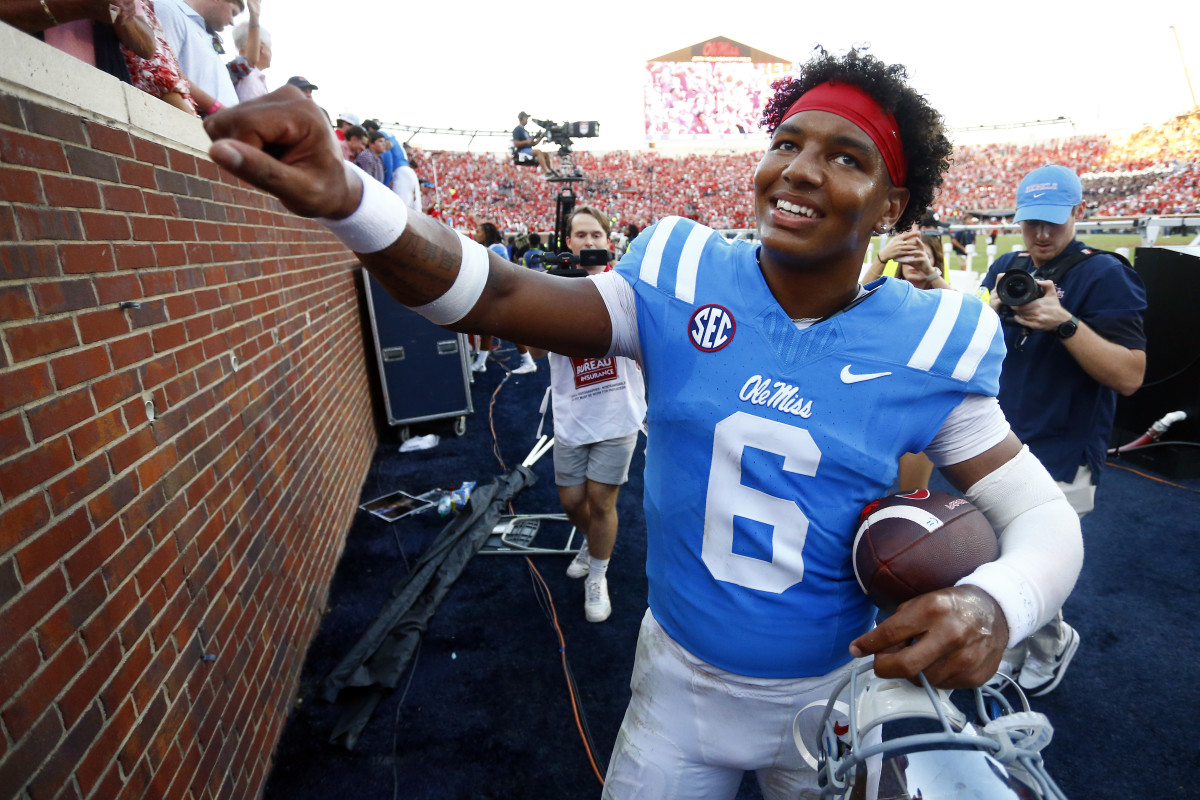
Trinidad Chambliss and the Ole Miss Rebels capped the regular season with a Week 14 win over the Mississippi State Bulldogs. The victory was almost overshadowed by the drama of coach Lane Kiffin leaving for the LSU Tigers vacancy.
However, at 11-1, the Rebels’ national championship hopes are very much alive. ESPN’s FPI gives Ole Miss a 100% chance of making the College Football Playoff.
Advertisement
Much of the team’s success is tied to Chambliss. He has completed 218-of-333 passes for 3,016 yards, 18 touchdowns, three interceptions and a 157.6 passer rating. He’s also rushed for 470 yards and six touchdowns on 118 carries.

Ole Miss Rebels quarterback Trinidad Chambliss.Petre Thomas-Imagn Images
The Rebels’ successful season has created numerous name, image and likeness licensing opportunities for the redshirt senior. On Thursday, he teased a new partnership. Chambliss revealed his newest NIL deal with AT&T in a joint Instagram post on Saturday.
Advertisement
“Y’all had eyes on the wrong transfer #ATTInfluencer #ad,” the caption read.
It doesn’t come as much of a surprise that Chambliss has capitalized on a deal with a company as recognizable as AT&T. On3 estimates his NIL valuation is at $665,000, which is estimated to be the 54th highest among college football quarterbacks.
It’s the fourth highest among Ole Miss players, behind offensive tackle Diego Pounds ($1.6 million), edge Princewill Umanmielen ($1.1 million) and running back Kewan Lacy ($927,000).
Advertisement
This is Chambliss’ final year of eligibility. That means time is running out for him to take advantage of more NIL deals while at Ole Miss.
In the most recent College Football Playoff selection committee rankings, the Rebels earned the No. 6 spot. Chambliss and Ole Miss now await the final rankings, which will be announced at noon ET on Sunday on ESPN.
Related: Deion Sanders, Colorado Suffer Transfer Portal Blow on Friday
This story was originally published by Athlon Sports on Dec 6, 2025, where it first appeared in the College Football section. Add Athlon Sports as a Preferred Source by clicking here.
-

 Rec Sports2 weeks ago
Rec Sports2 weeks agoFirst Tee Winter Registration is open
-

 Rec Sports2 weeks ago
Rec Sports2 weeks agoFargo girl, 13, dies after collapsing during school basketball game – Grand Forks Herald
-

 Motorsports2 weeks ago
Motorsports2 weeks agoCPG Brands Like Allegra Are Betting on F1 for the First Time
-
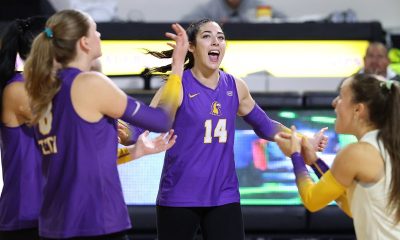
 Sports3 weeks ago
Sports3 weeks agoVolleyball Recaps – November 18
-

 Motorsports2 weeks ago
Motorsports2 weeks agoF1 Las Vegas: Verstappen win, Norris and Piastri DQ tighten 2025 title fight
-

 Sports2 weeks ago
Sports2 weeks agoTwo Pro Volleyball Leagues Serve Up Plans for Minnesota Teams
-

 Sports2 weeks ago
Sports2 weeks agoUtah State Announces 2025-26 Indoor Track & Field Schedule
-

 Sports2 weeks ago
Sports2 weeks agoSycamores unveil 2026 track and field schedule
-

 Motorsports1 week ago
Motorsports1 week agoRedemption Means First Pro Stock World Championship for Dallas Glenn
-

 NIL7 days ago
NIL7 days agoBowl Projections: ESPN predicts 12-team College Football Playoff bracket, full bowl slate after Week 14
















